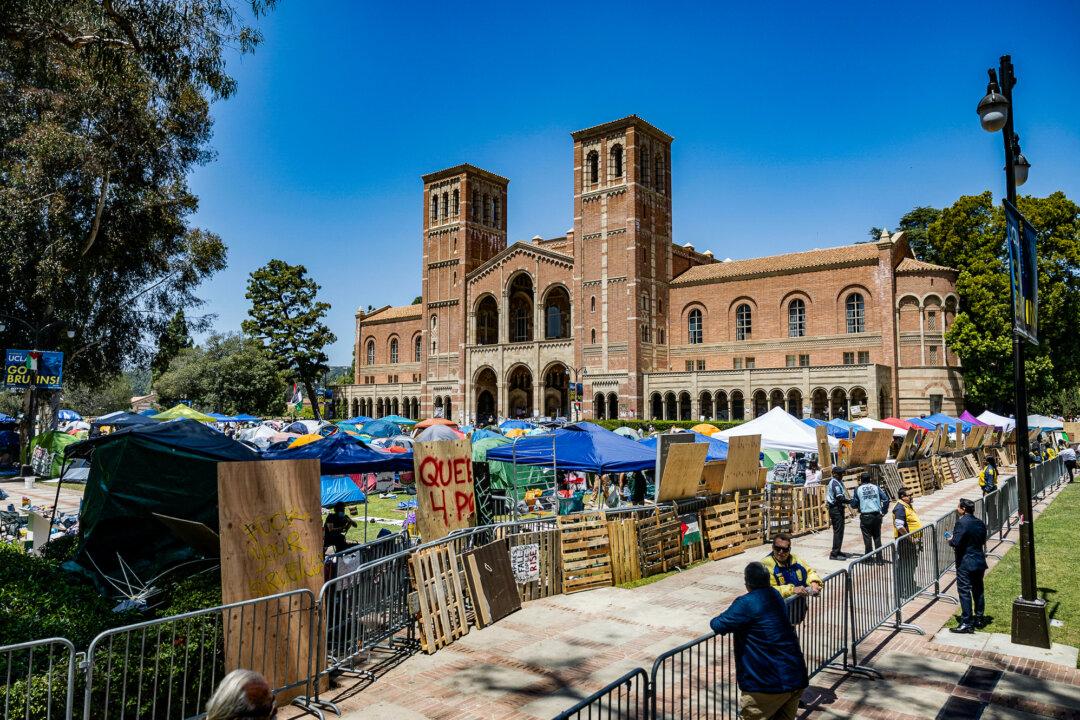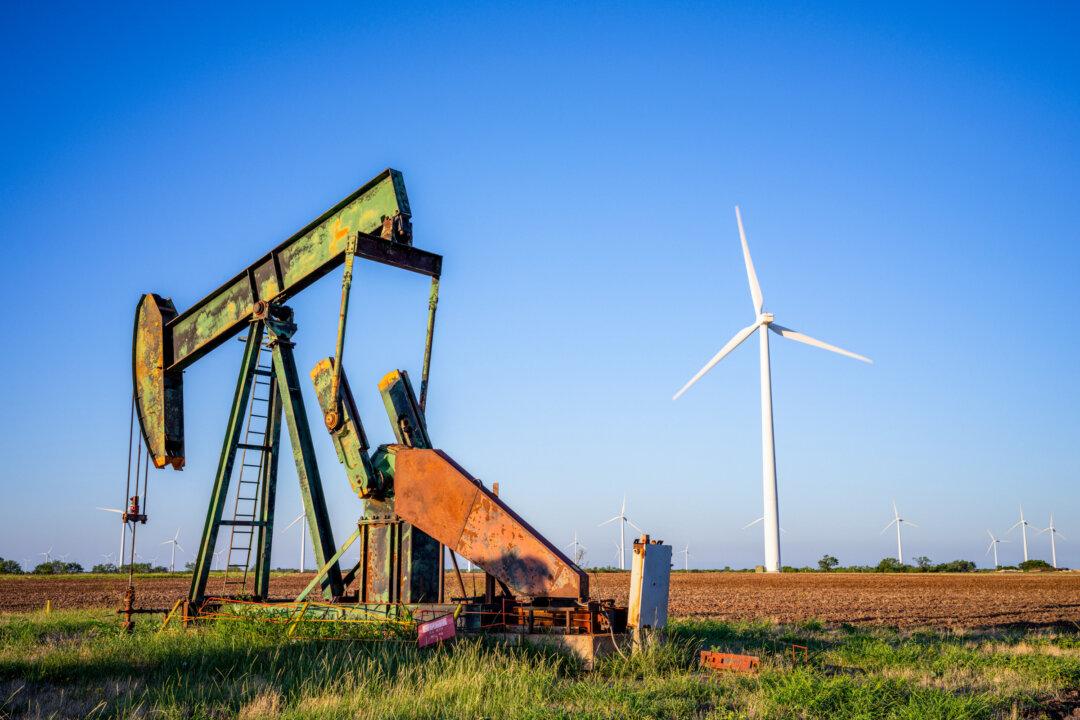May normally means final exams and graduation ceremonies at universities and colleges, but it’s May 2 and many campuses across the United States are paralyzed in tense standoffs between pro-Palestinian protesters—including some who have erected fortified encampments on quads—and police in riot gear.
At least 300 people were arrested on college campuses from Manhattan to Madison, Wisconsin, and from Dallas to Denver on May 1, mostly while resisting, usually passively, law enforcement efforts to clear away ad hoc occupations of public property.
Pro-Palestinian groups demanding an end to the war in Gaza and divestment from Israel have embroiled at least 50 universities and colleges across more than 30 states in the largest groundswell of campus unrest since the 1980s anti-apartheid protests and the ‘60s and ’70s Vietnam War protests.
As of May 1, nearly 2,000 people had been arrested on more than two dozen university and college campuses across at least 22 states since the April 18 arrests of 108 Columbia University students in New York City on their Morningside campus in Manhattan.
Manhattan remained a hotbed of upheaval on May 1 following the arrests of nearly 300 people the night before, when police routed occupiers from Columbia’s Hamilton Hall, detaining 109, and from an administration building at the City College of New York in Harlem, jailing 173.
Early on May 2, officials at Fordham University’s Manhattan campus were surveying the damage to its Lowenstein Center, where protesters smashed glass doors, vandalized walls with graffiti, and erected tents before being removed by police the night before. At least 15 were taken to jail.
In New Orleans on May 1, at least 14 people were arrested when campus police dispersed protesters from Tulane University. In Dallas, 17 were arrested for attempting to erect an encampment at the University of Texas.
“Individuals may peacefully assemble in the common outdoor areas of campus to exercise their right to free speech, but they may not construct an encampment or block pathways,” UT–Dallas said in a statement before the arrests.
Most campus protests have been peaceful, but police had to use pepper spray and rubber bullets while arresting four at the University of Arizona in Tucson, Arizona, and while detaining at least 34 in an encampment at the University of Wisconsin–Madison.

‘Instigators’ Infiltrating Protests
University of Wisconsin officials in a May 1 statement said they were investigating the actions of “individuals from outside of our campus community.”Also May 1, at least 90 were arrested at Dartmouth College in New Hampshire for criminal trespass and resisting arrest after university officials warned protesters about erecting an encampment.
In a later statement, Dartmouth stated that it will protect free speech but will not allow its campus “to be co-opted by a small group of protesters, including outside agitators.”
Dartmouth University officials noted that students supporting Palestinians had peacefully demonstrated on campus at least seven times since October 2023 but that many of those engaged in the post-April 18 wave of dissent are not students.
The presence of “outside agitators” noted by college and law enforcement officials in Wisconsin and New Hampshire was also cited by New York City Mayor Eric Adams in an April 30 press conference in which he identified “professional protesters” leading demonstrators, many of them nonstudents, onto campuses to confront university officials and police with orchestrated tactics.
Columbia University in an April 30 statement maintained that there were only “dozens” of students out of 37,000 enrolled among the hundreds of protesters on campus and in Hamilton Hall.
Protests in New York City are being “co-opted by professional outside agitators,” Mr. Adams said, reiterating that claim on May 1 and insisting that the seizure of Hamilton Hall “was led by individuals who were not affiliated with the university.”
That presence of “professional agitators” remains an “elevated concern,” NYPD Deputy Commissioner Rebecca Weiner told reporters on May 1.
The presence of “instigators” is also among questions being asked following violent skirmishes at the University of California–Los Angeles (UCLA) early on May 1, when an organized bloc of counter-demonstrators stormed onto campus to attack the “Palestinian Solidarity Encampment,” kicking off an hours-long melee that critics say police and university officials failed to quell quickly.
UCLA Chancellor Gene Block said the counter-demonstrators were led by “instigators” not associated with campus student groups. Los Angeles Mayor Karen Bass promised a “full investigation” into who was behind the “absolutely detestable” assault on the encampment.
Early on May 2, hundreds of protesters remained—many garbed in gas masks and goggles and chanting, “Where were you Tuesday night?”—inside the plywood barricade of their quad encampment at UCLA despite being ordered by police on loudspeakers all day May 1 to vacate or face arrest for unlawful assembly.
Hundreds more protesters were gathering elsewhere on UCLA’s campus, with scuffles and arrests being reported as daylight dawned.
Although there were no reports of confrontations between demonstrators and counter-protesters—a growing concern for campus officials nationwide—police from multiple agencies appear poised to sweep into the UCLA encampment and end the occupation.







